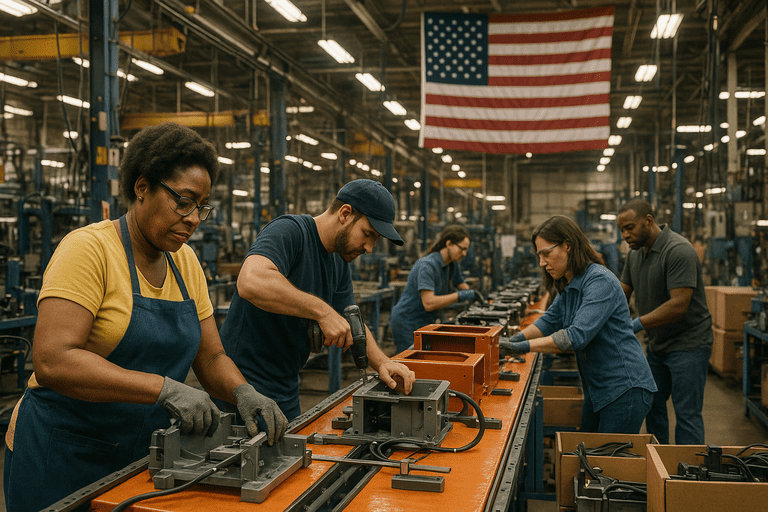The Trump administration has implemented a series of tariffs aimed at revitalizing American manufacturing and reducing reliance on foreign imports. These measures include a 25% tariff on steel imports and a 10% universal tariff on most other imports, designed to protect domestic industries and encourage companies to invest in U.S. production facilities. (whitehouse.gov)
In response to these tariffs, several multinational corporations have announced plans to establish or expand manufacturing operations within the United States. For instance, Hyundai has invested $13 billion in a new plant in Georgia, and Samsung has moved dryer production to South Carolina. (rollcall.com) These developments are expected to create thousands of jobs and bolster local economies.
However, the implementation of tariffs has introduced certain complexities. Some industries have experienced increased production costs due to higher prices for imported components. For example, small and medium-sized manufacturers that rely on imported intermediate goods have faced challenges in adjusting their supply chains and managing expenses. (reshoringinstitute.org) Additionally, the automotive sector reported a 1.9% decline in motor vehicle and parts production in April 2025, partly attributed to tariff pressures. (reuters.com)
The administration’s trade policies have also led to international responses. Countries like Vietnam and Mexico, previously benefiting from the “China-plus-one” strategy, are now under pressure to secure better bilateral trade terms with the U.S. to maintain their attractiveness as manufacturing hubs. (reuters.com) Furthermore, allegations have emerged that some Southeast Asian nations are facilitating the circumvention of U.S. tariffs through trans-shipment practices, prompting increased scrutiny and demands for stricter enforcement. (ft.com)
Despite these challenges, the administration remains committed to its tariff strategy as a means to rebuild domestic manufacturing and reduce the trade deficit. U.S. Trade Representative Jamieson Greer emphasized that the 10% universal tariff will continue to serve as a key tool in achieving these objectives. (reuters.com) While the policy has led to increased domestic investment and job creation, it has also necessitated adjustments in supply chains and raised concerns about potential inefficiencies and bureaucratic complexities.
As the U.S. navigates this evolving trade landscape, the administration’s approach underscores a commitment to economic independence and the revitalization of American manufacturing. The success of these policies will depend on the ability to balance protective measures with the realities of global trade dynamics. Ongoing monitoring and potential policy refinements may be required to address emerging challenges and ensure the long-term sustainability of domestic industries.
—
Tom Blake writes on markets, trade policy, and the government’s role in private enterprise. He studied economics at George Mason University and spent six years as a policy advisor for a business coalition before turning to financial journalism. His work examines the real-world impact of regulations, subsidies, and federal economic planning.



